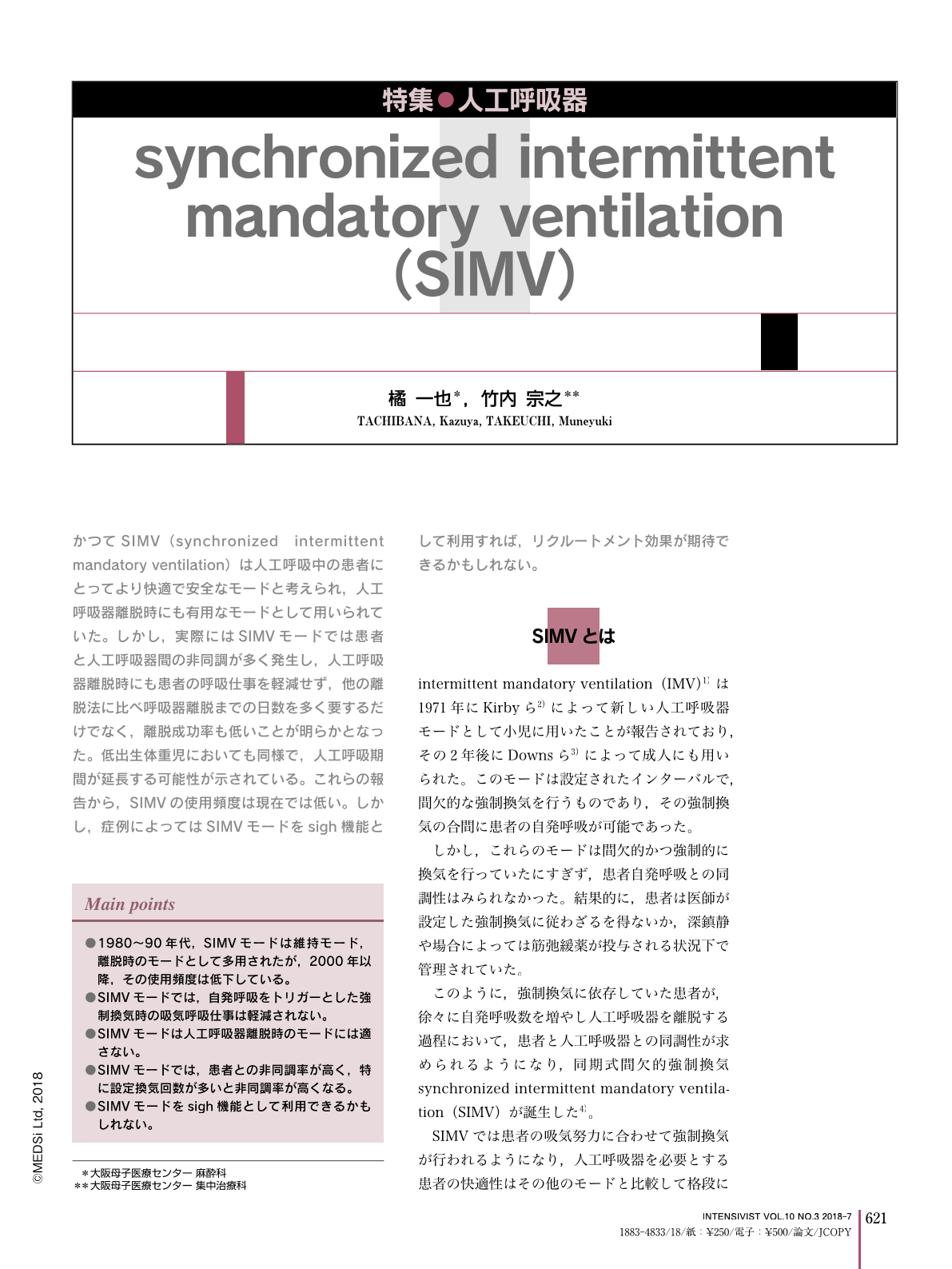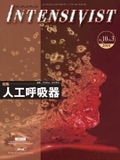Japanese
English
- 有料閲覧
- Abstract 文献概要
- 1ページ目 Look Inside
- 参考文献 Reference
かつてSIMV(synchronized intermittent mandatory ventilation)は人工呼吸中の患者にとってより快適で安全なモードと考えられ,人工呼吸器離脱時にも有用なモードとして用いられていた。しかし,実際にはSIMVモードでは患者と人工呼吸器間の非同調が多く発生し,人工呼吸器離脱時にも患者の呼吸仕事を軽減せず,他の離脱法に比べ呼吸器離脱までの日数を多く要するだけでなく,離脱成功率も低いことが明らかとなった。低出生体重児においても同様で,人工呼吸期間が延長する可能性が示されている。これらの報告から,SIMVの使用頻度は現在では低い。しかし,症例によってはSIMVモードをsigh機能として利用すれば,リクルートメント効果が期待できるかもしれない。
Main points
●1980〜90年代,SIMVモードは維持モード,離脱時のモードとして多用されたが,2000年以降,その使用頻度は低下している。
●SIMVモードでは,自発呼吸をトリガーとした強制換気時の吸気呼吸仕事は軽減されない。
●SIMVモードは人工呼吸器離脱時のモードには適さない。
●SIMVモードでは,患者との非同調率が高く,特に設定換気回数が多いと非同調率が高くなる。
●SIMVモードをsigh機能として利用できるかもしれない。
In the past, synchronized intermittent mandatory ventilation (SIMV) was considered a more comfortable and safe mode for patients undergoing mechanical ventilation and useful for liberation from mechanical ventilation. However, studies showed that patient-ventilator asynchrony was more common and patient work of breathing during liberation from mechanical ventilation was not reduced by using the SIMV mode. When the SIMV mode was compared with other liberation modes or techniques, the time interval until tracheal extubation was longer and the rate of successful liberation was lower using the SIMV mode. The SIMV mode was also shown to prolong the duration of mechanical ventilation even in low birth weight infants. Currently, the SIMV mode is not frequently indicated for patients undergoing mechanical ventilation. However, using the SIMV mode to give sigh breaths may provide optimal lung recruitment in certain patients.

Copyright © 2018, MEDICAL SCIENCES INTERNATIONAL, LTD. All rights reserved.


